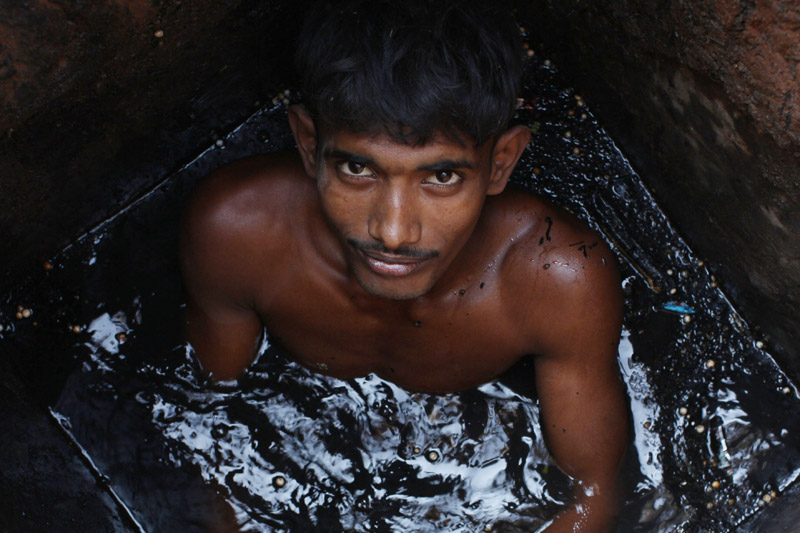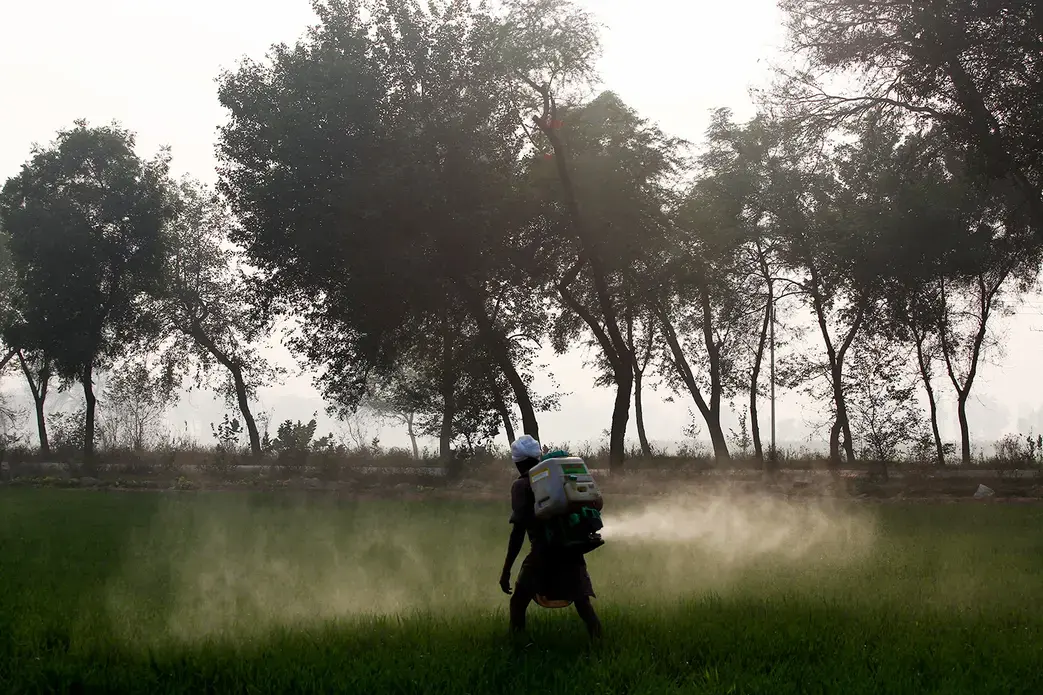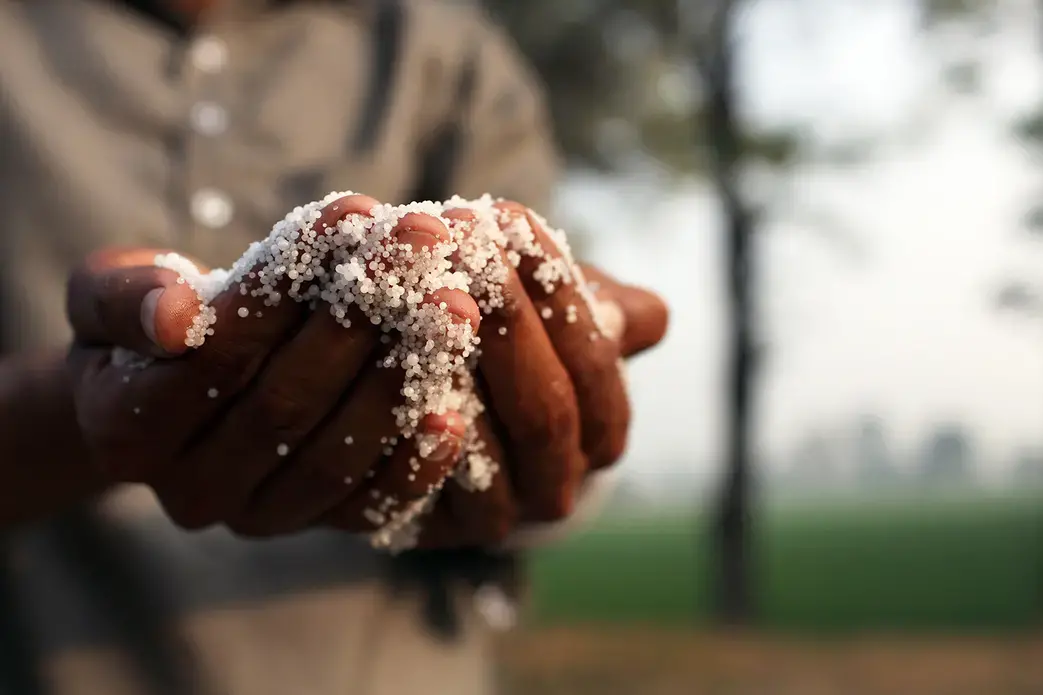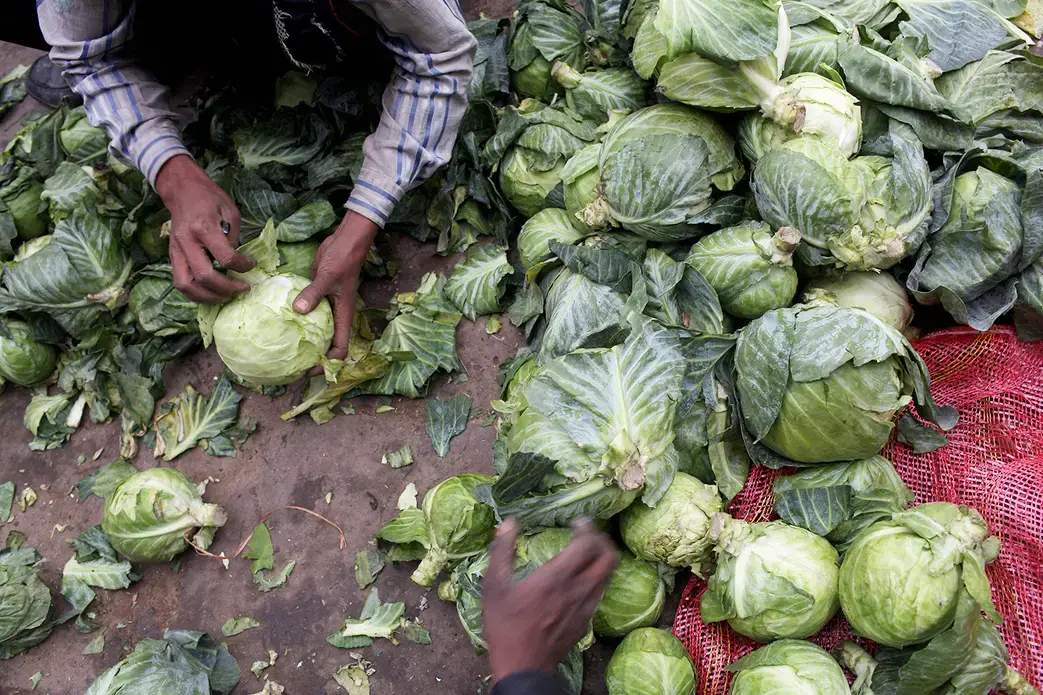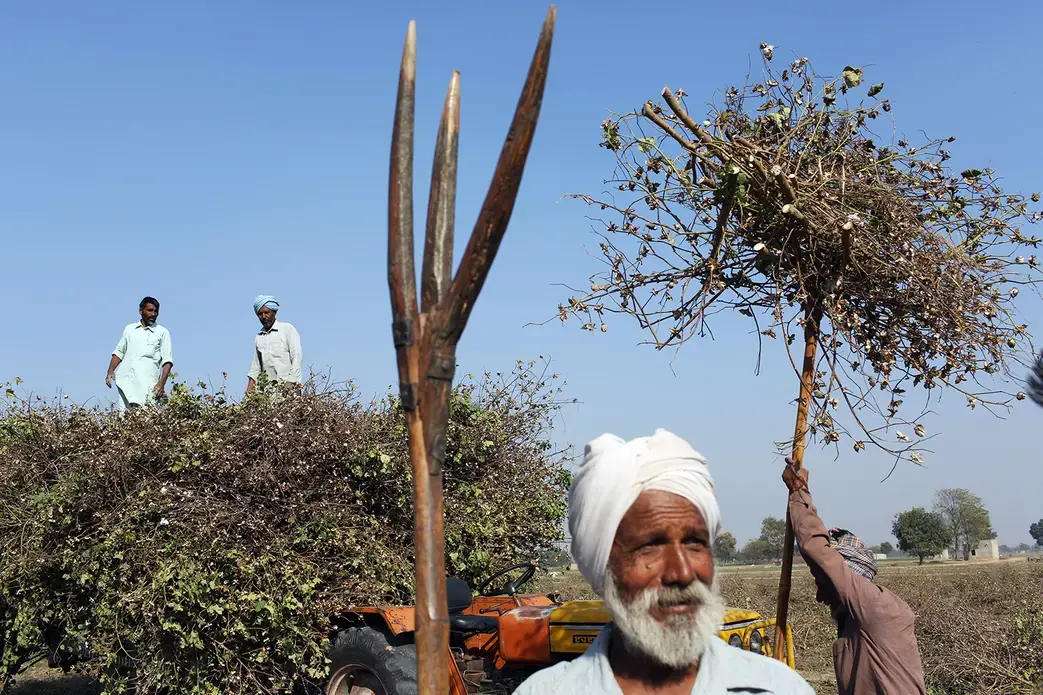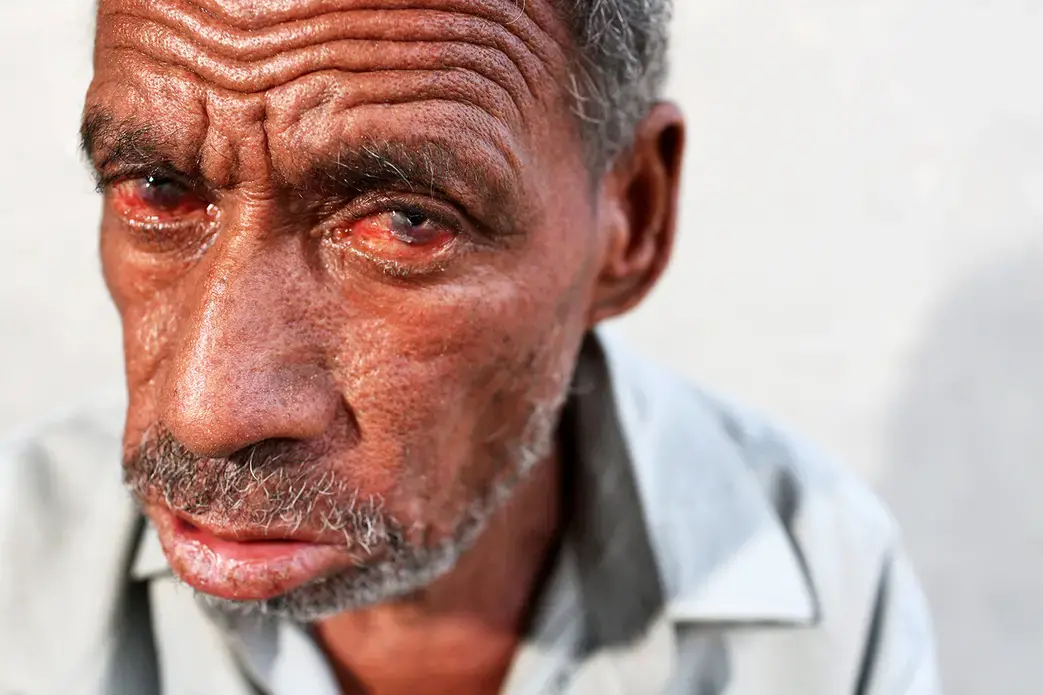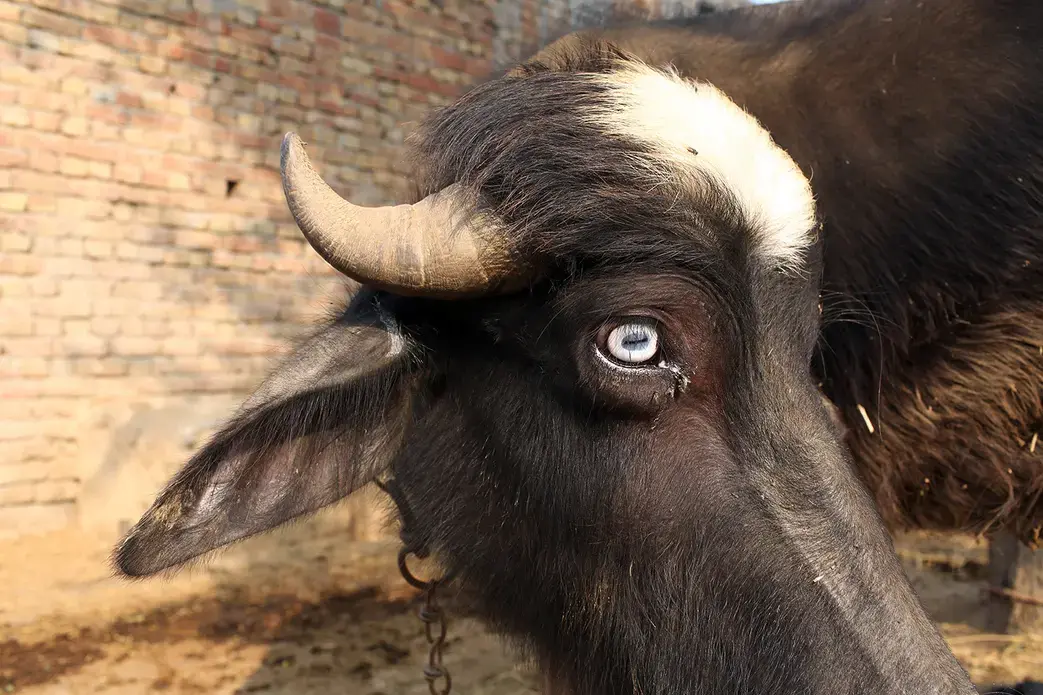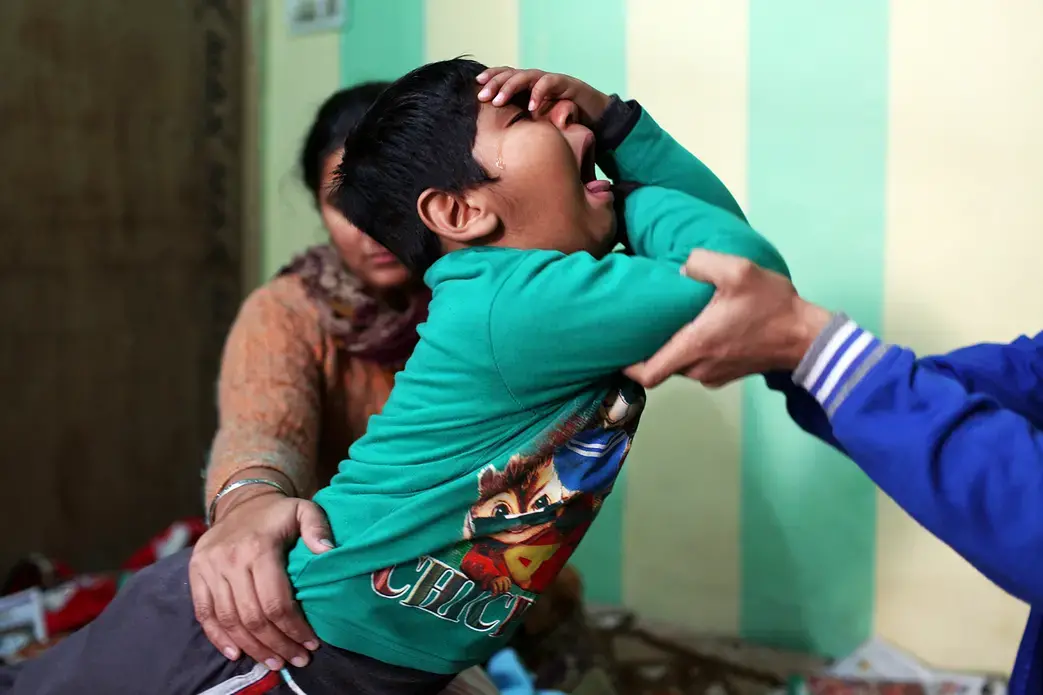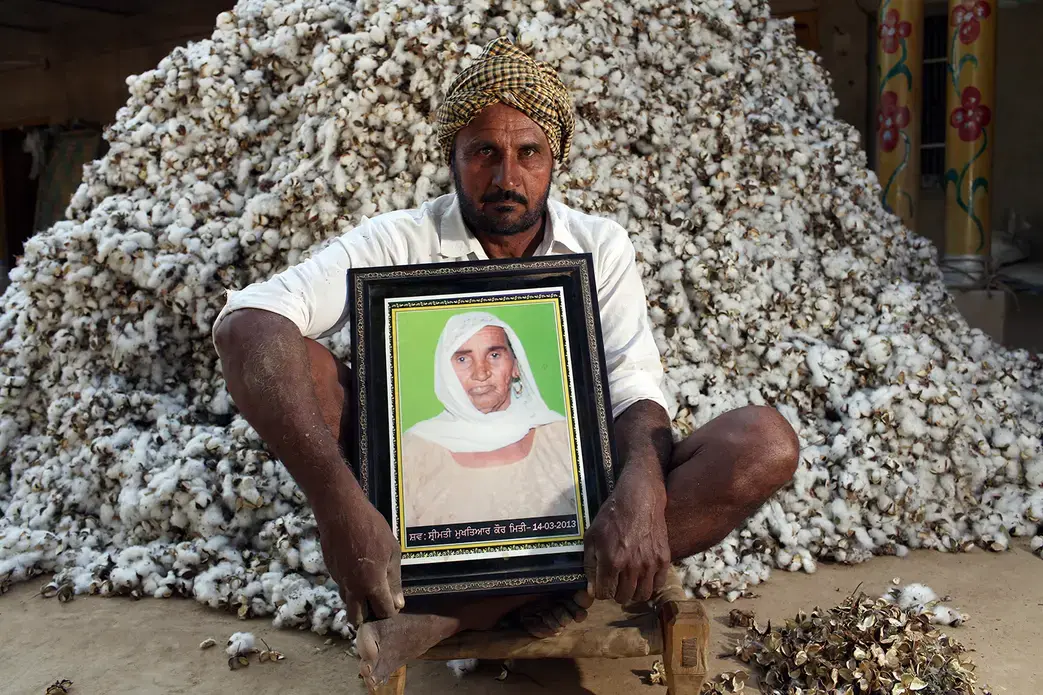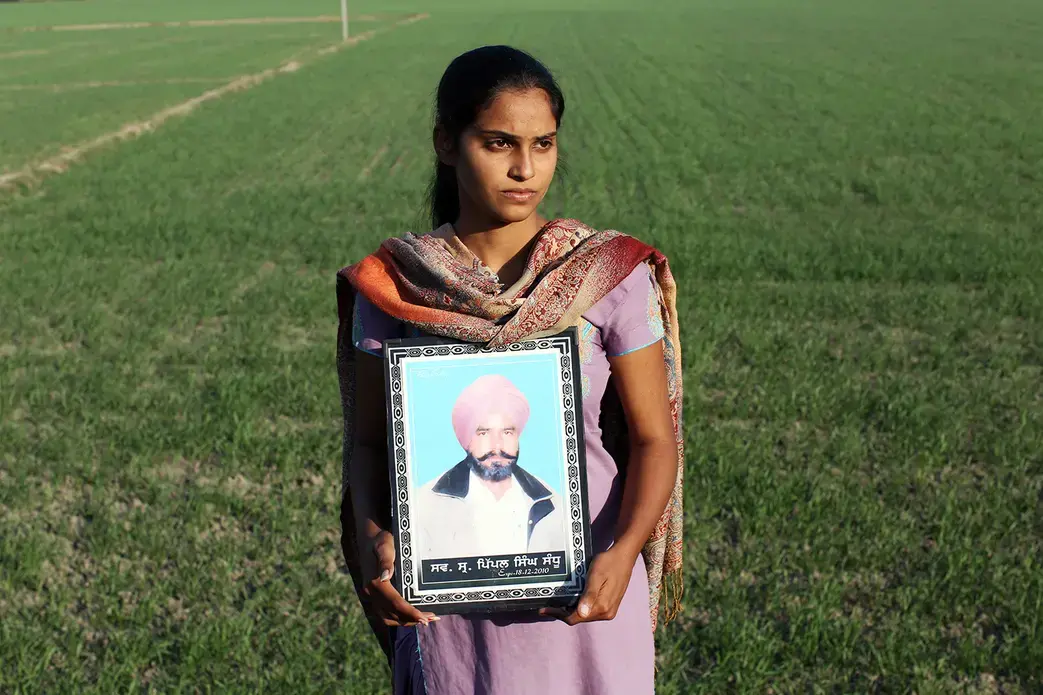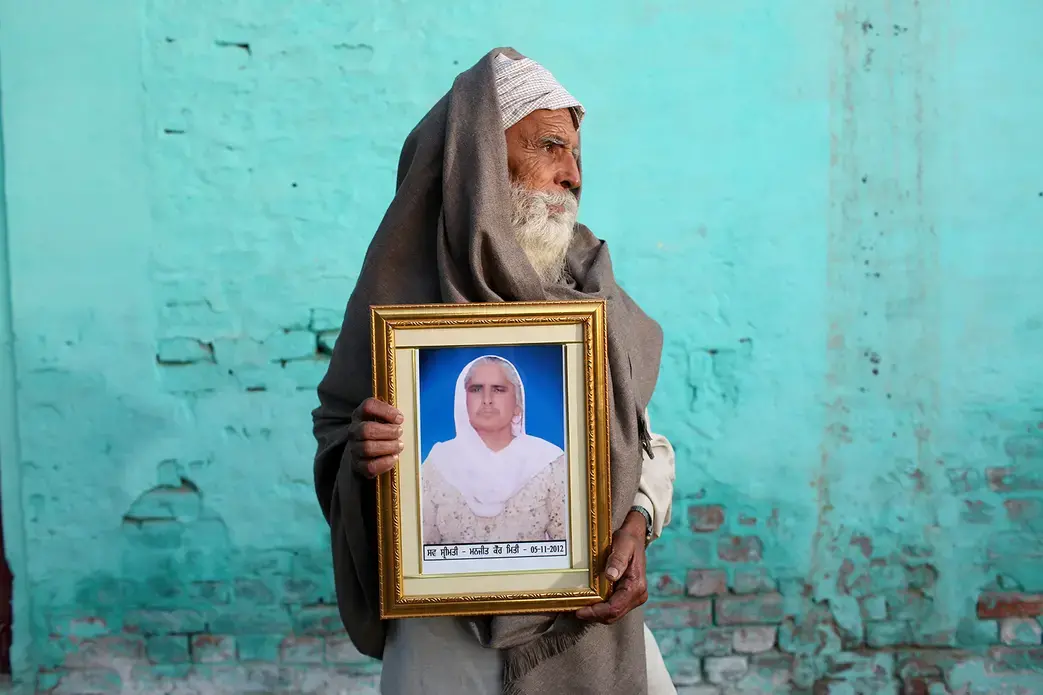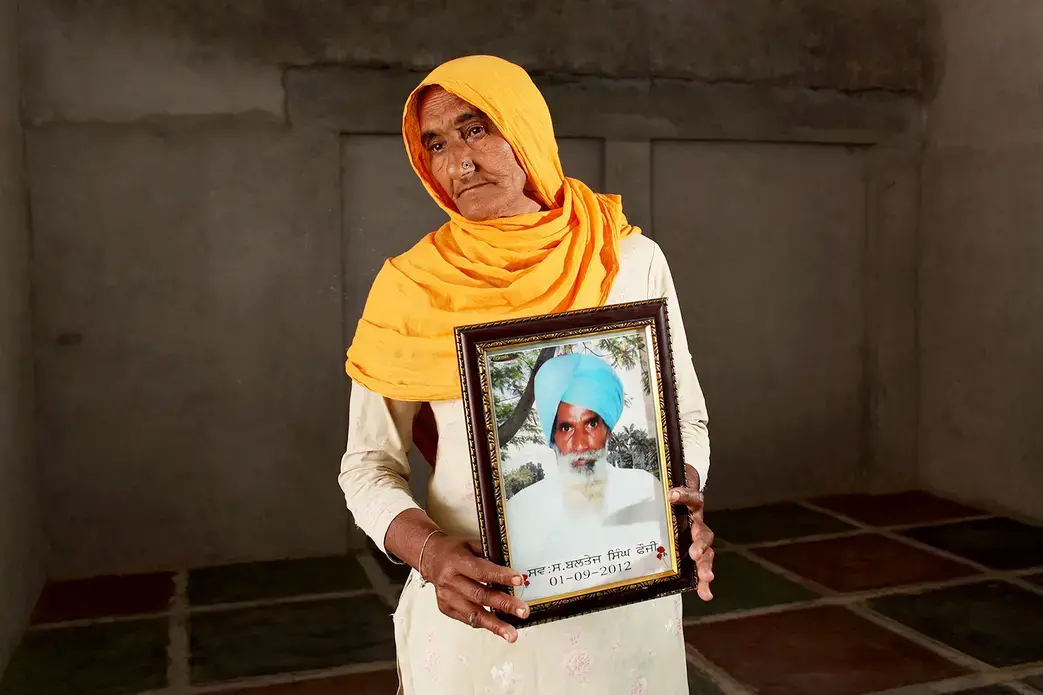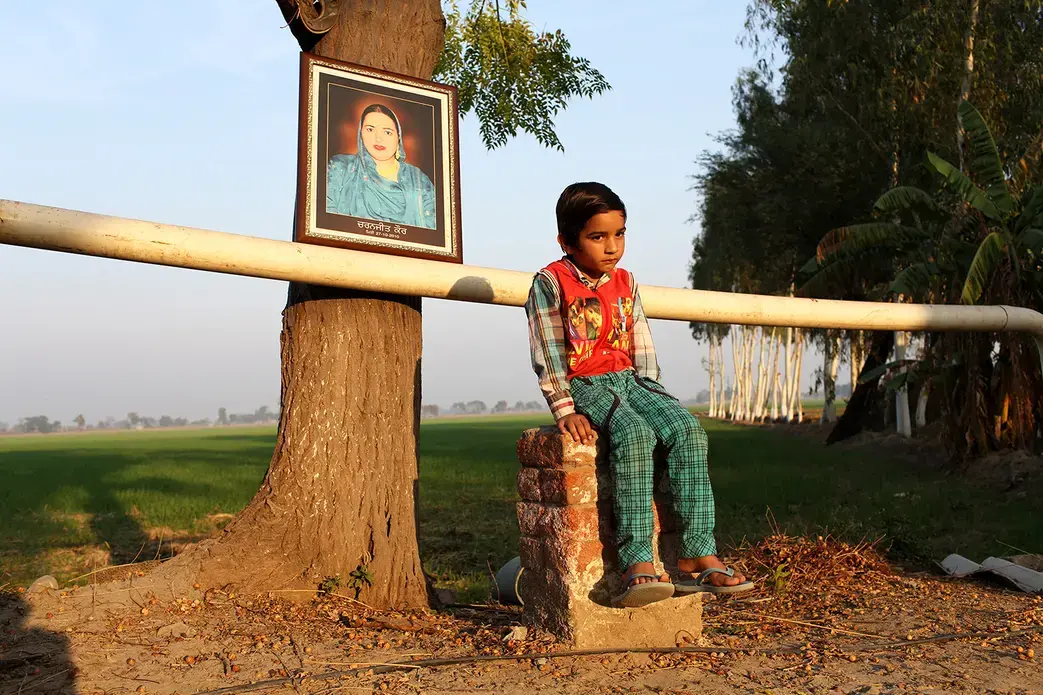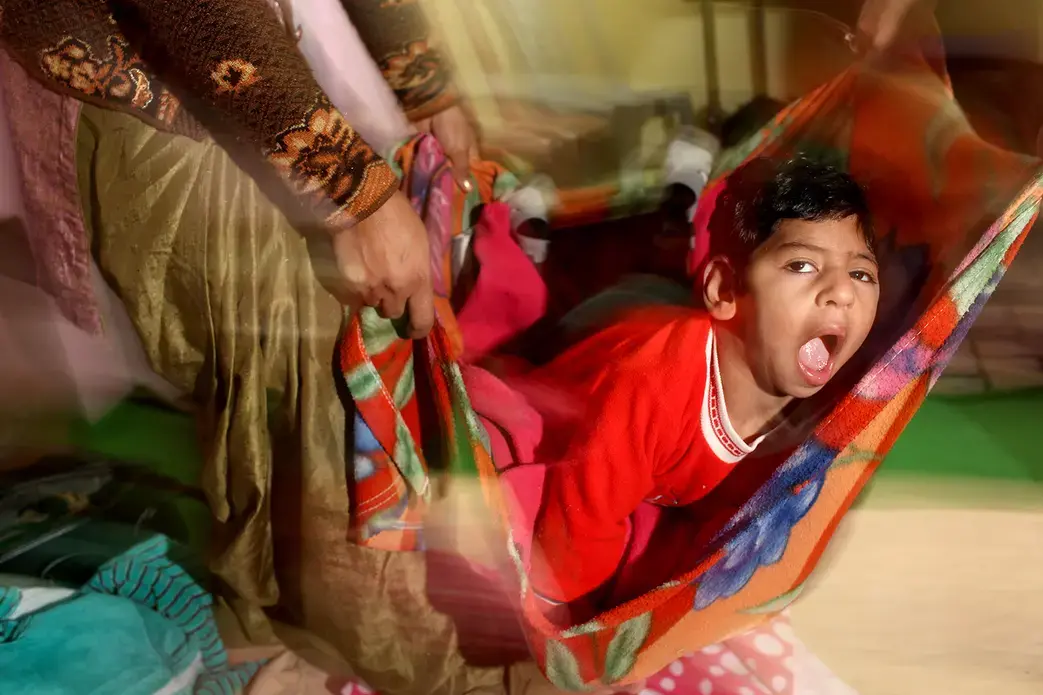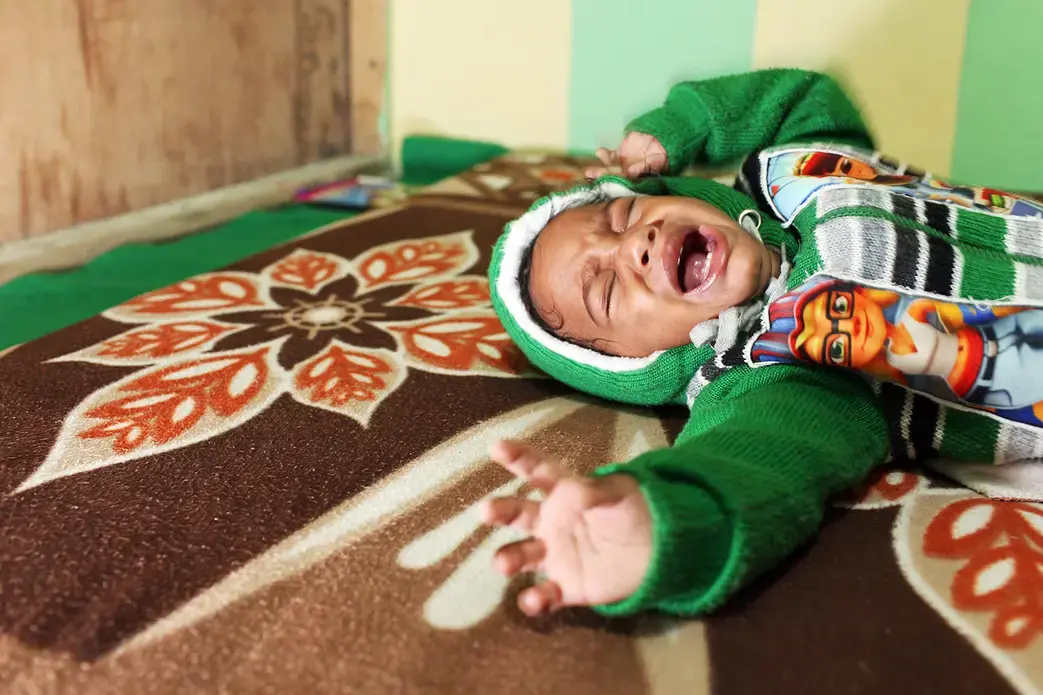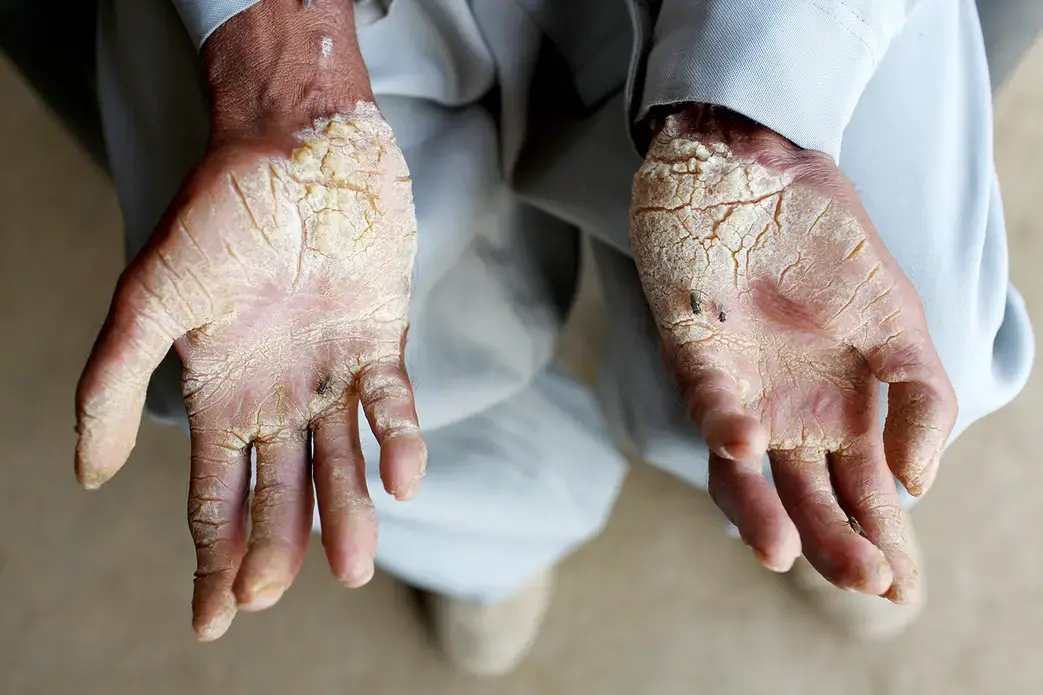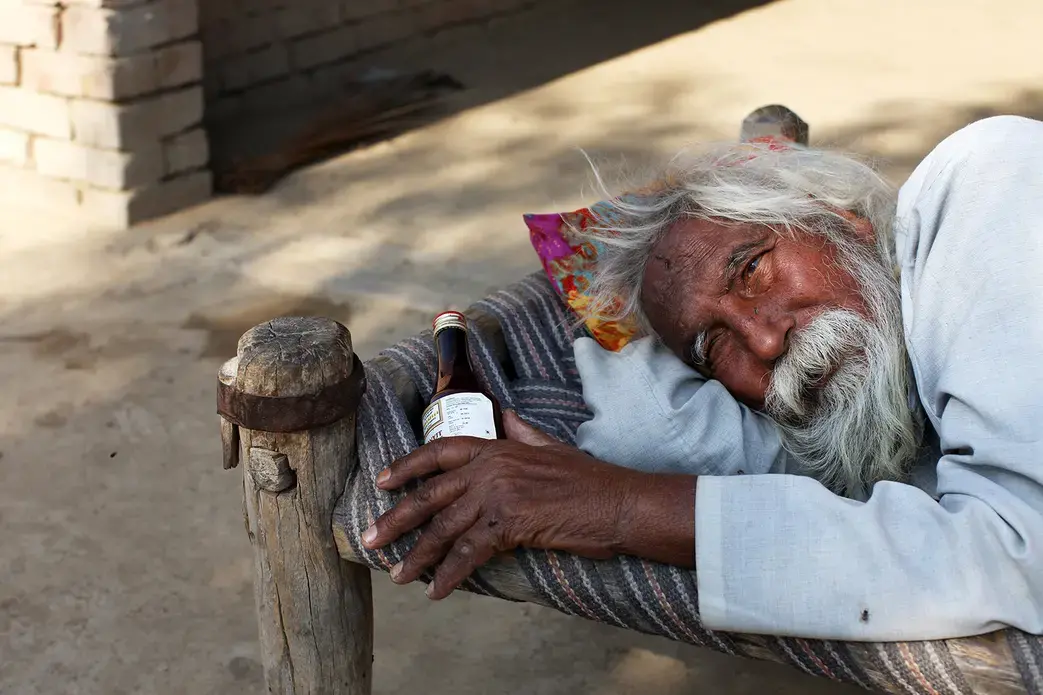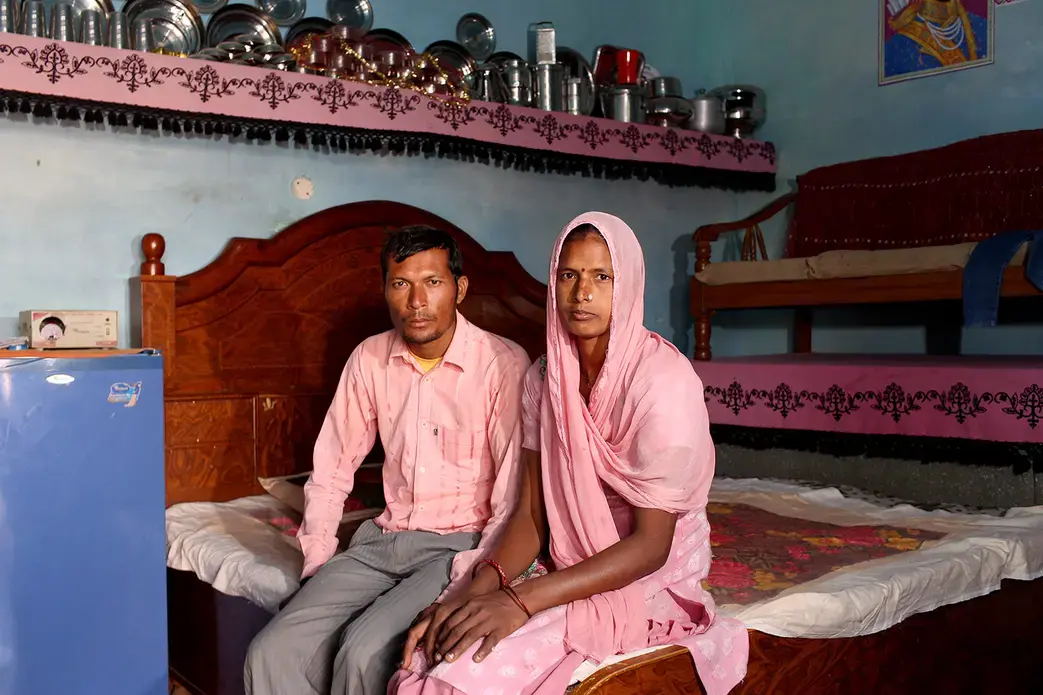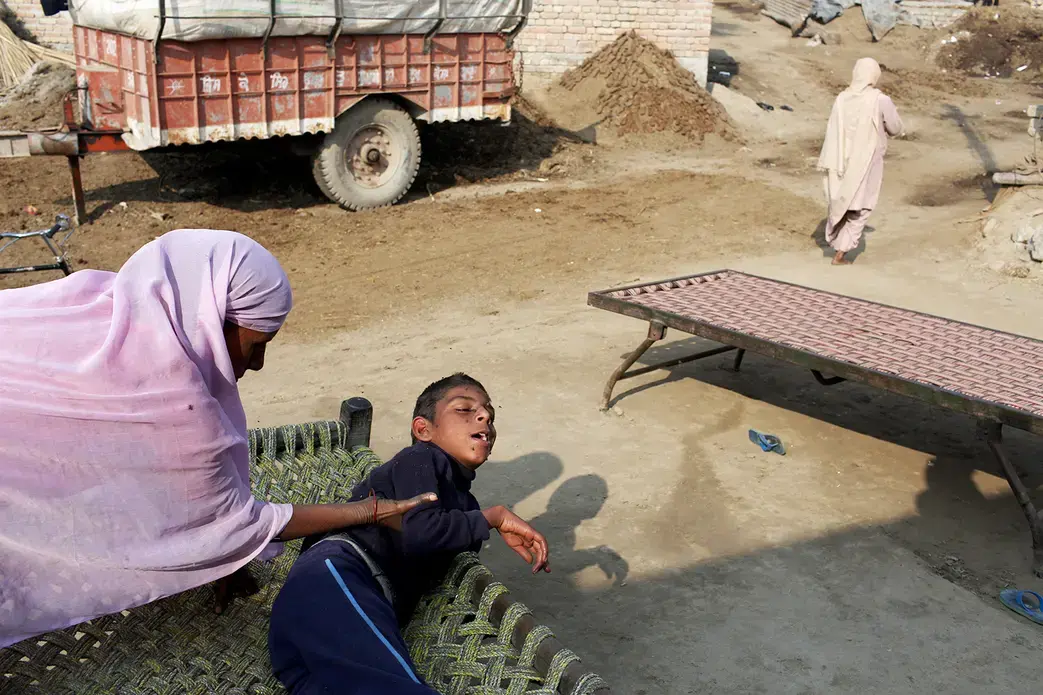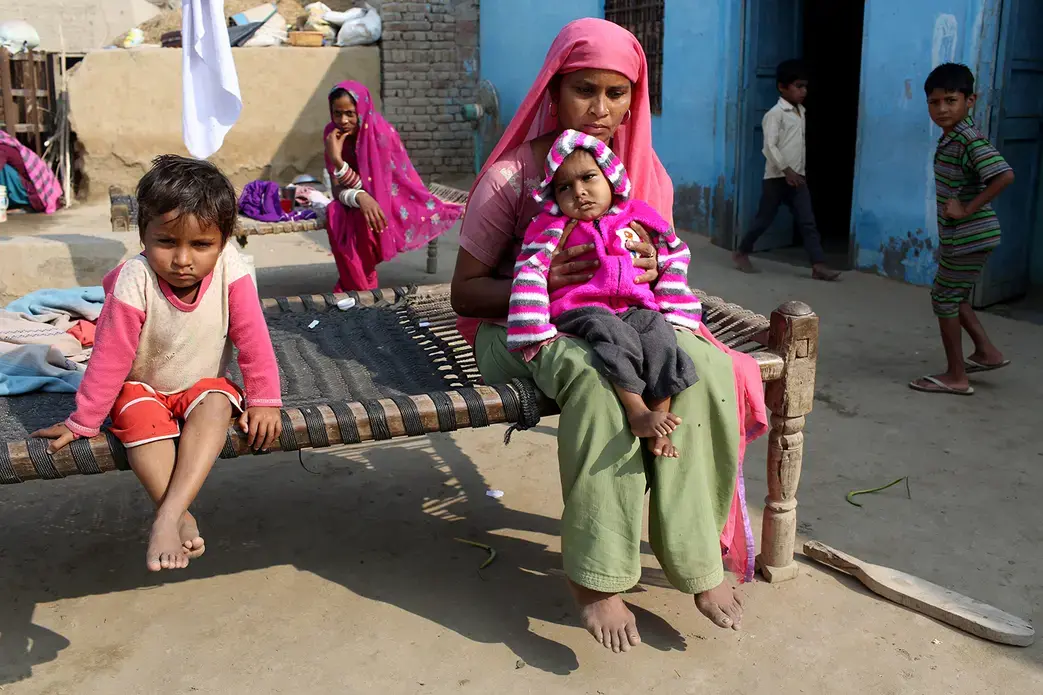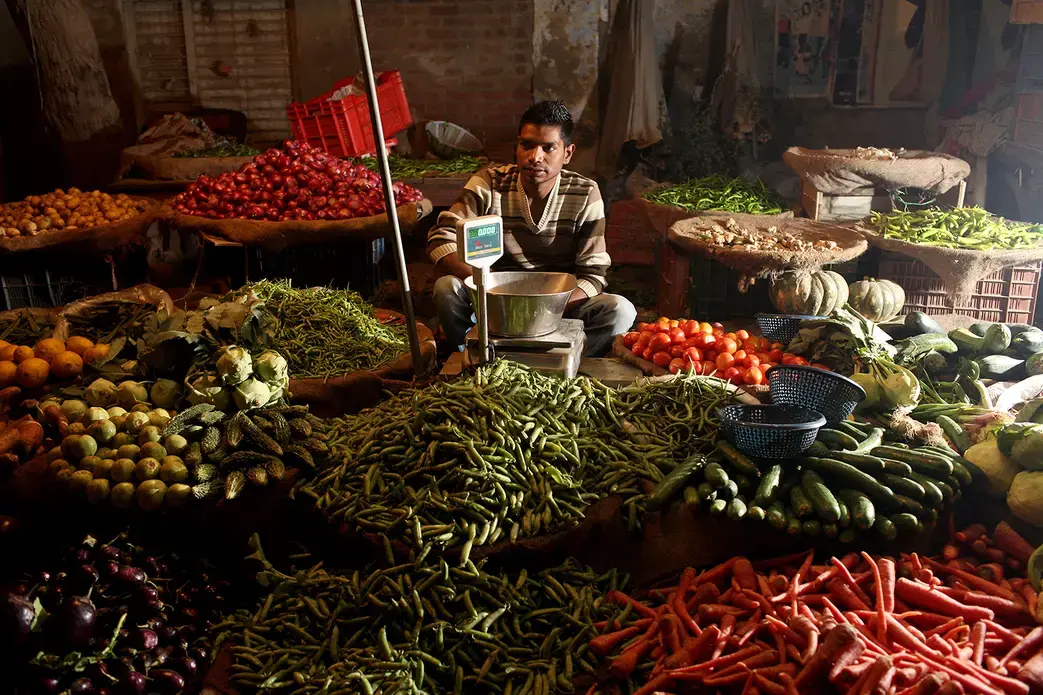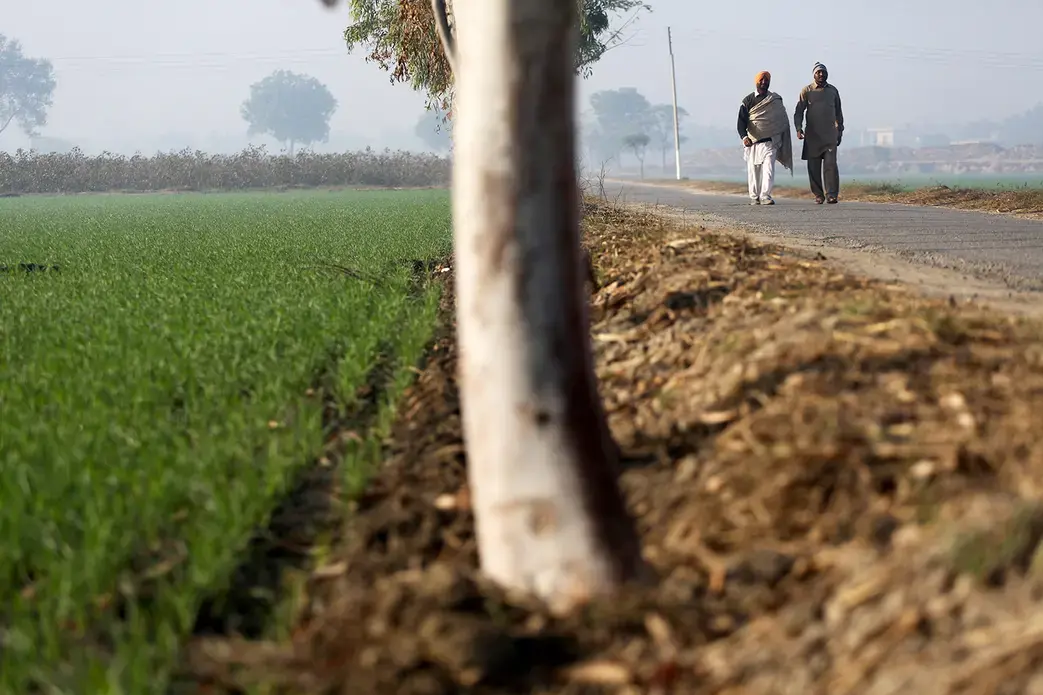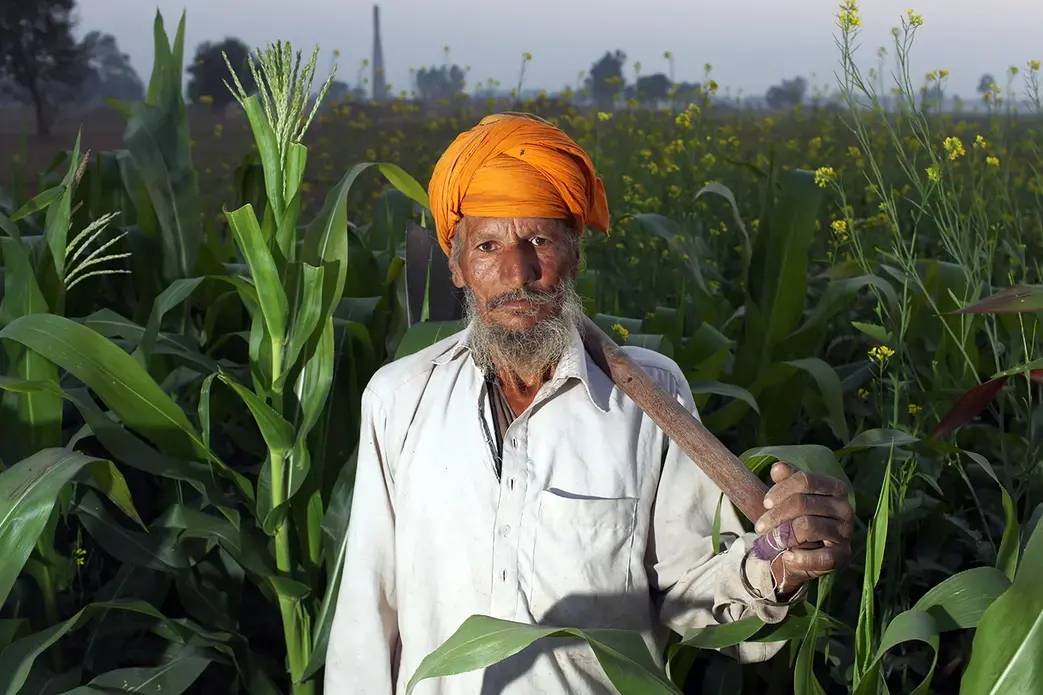"We can say that Punjab is dying now. There is no doubt. Punjab is the food basket [of India]. Now we can say it is the disease basket."
Dr. Pritpal Singh sits in his simple office in the Baba Farid Center for Special Children, located in the small town of Faridkot, in India's Punjab region.
Since 2003, Dr. Singh has been here, working with fellow health professionals at the center, offering therapeutic treatment to a growing number of young children from local areas born with health and mental disabilities.
"We are providing occupational therapy, speech therapy, yoga, and naturopathy. Every type of therapy. We are also visiting villages, checking them free of cost, and training the parents how to deal with these kids," continues Dr. Singh, who set up the center in response to growing concerns about the severity of illnesses that he was witnessing in his community, especially those affecting children.
A surge in the number of children brought to the center hints at an alarming trend.
Bordering Pakistan in the far northwest of India, Punjab has become the country's most important agricultural region. The green revolution of the 1960s saw great technological advancements and modern farming practices expand, allowing Punjab to become the nation's leader in production of commodities like rice, wheat, and varied general produce.
Booming production saw India rise to become the world's second largest producer and exporter of cotton, two thirds of which is grown in the Punjab region.
These 50 years of increased productivity, however, are thought to have been fueled by the excessive use of fertilizers, pesticides, and insecticides. The presumed result is of a slow accumulation of toxins within the water, soil, food—and ultimately, people—of the region.
The children are dying
"They are 4 1/2 years old. When they were born they were fine. After two days they fell sick. They used to get regular fits and their bodies changed to a blue color," says Rajbir Singh, as he struggles to control the child wriggling in his arms. "Of course, for this we had lots of problems and worries. Two children and both of them are sick."
Sitting in a courtyard at the Baba Farid Center, he and his wife have brought their two sons —twins—who each suffer a number of both health and mental problems. Each day they travel from their nearby village for treatment at the center.
"I worry a lot about this son," Mantrit Kaur says as she wipes away a steady stream of tears from her face, thinking about the future of her two boys. With one appearing to be responding to treatment better than the other, worries continue for the one who isn't responding as well.
"Since coming here I can see that it's not just my son, there are many sons," she continues. "He will be okay here. He is 4 1/2 years old. He doesn't understand anything. He cannot listen to commands. As long as I am here there is no problem, but if I'm not here, who will take care of him?"
In 2009, a Greenpeace report carried out by scientists from the University of Exeter in the UK found that water from local wells in Faridkot carried dangerously high levels of nitrates, a by-product of synthetic nitrate fertilizers present in the surrounding agricultural land.
According to the report, "20 percent of all sampled wells have nitrate levels above the safety limit of 50 mg of nitrate per liter for drinking water, established by the World Health Organization (WHO)." It further noted that "nitrate pollution in drinking water can have serious health impact on humans, especially for babies and children. The most significant potential health effects of drinking water contaminated with nitrate are the blue-baby syndrome (methemoglobinemia) and cancer."
In a 2010 study entitled "Metal exposure in the physically and mentally challenged children of Punjab, India," scientists from the Micro Trace Minerals Laboratory in Germany found elevated levels of heavy metals in local children.
Collecting 149 hair samples from children at the Baba Farid Center, they examined toxic metal concentrations and found that the hair of the children contained dangerously high amounts of barium, cadmium, manganese, lead, and uranium—signifying long-term exposure.
Cancer villages
"They are drinking very polluted water. We can say it is a toxic cocktail in our food chain," explains Dr. Singh as he cradles yet another child at his center.
"We have polluted the environment. Since the green revolution we have used lots of fertilizers, pesticides, and insecticides and that's why our soil, water, and air has been totally polluted," he says.
Outside of Faridkot, it does not take long to reach the nearby countryside. Surrounding the collected villages is the heart of the country's bread basket, an endless expanse of fields broken only by the odd dirt track, or small road, upon which tractors chug or bicycles meander.
"Many of the villages have cancer patients but nobody talks about it," he says.
Jarnil Singh sits in a small courtyard at the center of his home in the small village of Jajal, a small community of some 3,000 people near Faridkot.
It's a typical village in the region: single-story homes connected by dusty tracks that lead only to other villages. Everywhere you look are the ubiquitous green fields.
A retired school teacher, he has watched for decades as illness, notably cancer, has spread through his community, taking the lives of local farmers and slowly tearing families apart.
"Fifty-five people have died of cancer in the past 11 years. Many children have been born disabled and died."
"It started from 1995, due to the cotton belt. The American boll worm was the problem. In three months they were spraying every three days. The recommended amount is three to four times in three months. The pesticide companies recommended we use more. We were using these without hand gloves or masks. Health problems started from 1997-98. People started to get many types of cancer."
This excessive pesticide use continued in the community until 2004 when a new type of cotton, "Bt Cotton," was introduced. A genetically modified strain, it naturally produces chemicals which harm and kill attacking pests.
"After 2004, we got Bt cotton which was better. On this crop there was no worm," continues Mr. Singh. "Bt Cotton was good but the fertility of the land was gone. From 2004-2007, we used less [pesticides] but the productivity went down so use went up again to seven to eight times per three months. That's been the same ever since."
The sustained overuse of pesticides, insecticides, and fertilizers in this one village is not an isolated practice —it's visible across the region. Economic reality has dictated the behavior of residents for decades now. Productivity before health. With little to no advice from local government about safe usage practices, overuse is rampant and potential health implications ignored.
Official statistics on the rates of cancers in the region are almost impossible to come by, but the local population note an increased frequency of cancer diagnosis and a proliferation of "cancer villages," frightening people within the region.
"Punjab is now becoming a hotspot of cancer cases in India," says Chandra Bhushan, deputy director general of the Center for Science and Environment in Delhi. "There are a lot of studies which now link cancer in Punjab to the use of pesticides. Punjab is one of the largest users of pesticides in India. In fact, on a per acre basis it is the largest user of pesticides."
"In 2005, we did a study. We checked the blood samples of the people of Punjab and we found multiple pesticides in their blood," explains Bhushan. "Now, after these tests we couldn't say that these pesticides were causing cancer [but] what we essentially said was that we are finding large amounts of these chemicals in the bodies of people. It cannot be allowed. We cannot allow chemicals to trespass our body. Therefore, India needs a chemical trespass law—a law that says we are not going to allow chemicals into our body and accumulate [where] they might cause numerous diseases in the future."
A poisoned landscape
About 75 km southwest from the town of Faridkot lies the India-Pakistan border.
From the village of Teejaruhela, residents gaze through a wire fence separating the two nations.
"Today we are here because for the past four years we have surveyed this village. We took some samples and detected that heavy metal poisoning is too much [here]," explains Dr. Pritpal Singh during a routine health check of the local residents.
"Every house has a child with problems," he explains. "In this village there are only 2,200 people. We surveyed 150 houses and there are 62 kids with mental disabilities and cerebral palsy."
Disabled children reside in nearly every home. They lie on basic wooden beds, smiling and squirming as dictated by their illness.
The doctor approaches Gurucharan Singh, a boy who spends his days curled upon a simple wooden bed that rests outside his parent's home, in the sun.
"He is suffering from cerebral palsy," explains Dr. Singh. "He is 15 years old and he cannot speak. This is not only in this house. In every house we have kids like this."
In the green fields that surrounds the villages, only the rustle of the grass is heard as wind blows through the countryside. Sparrows, owls, and even eagles have long since vanished. A polluted ecosystem has left the village silent, this mirrored by the people of Punjab who themselves are seldom heard.
"The government has cut us off. We are getting no help," says one as the villagers gather around Dr. Singh, who now prepares to leave the village.
"We don't need the government!" cries another. "We just don't want the polluted water. Our land is poisoned."


